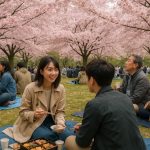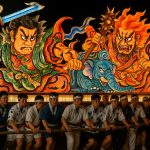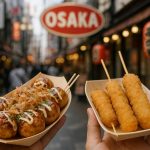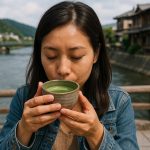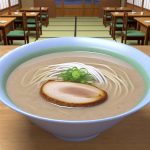Exploring Sake in Takayama and Niigata
Sake, the celebrated traditional rice wine of Japan, holds a prominent place in the land’s rich tapestry of culture and cuisine. This fermented beverage, crafted from polished rice, water, yeast, and koji mold, presents a world of flavors and aromas. Two regions, Takayama and Niigata, stand out for their distinguished sake offerings, each presenting unique intricacies in their brewing processes and taste profiles.
Takayama: Traditional Sake Brewing
Takayama, ensconced within the rugged Hida region, is a picturesque locale that has nurtured the art of sake brewing for generations. Its landscape is defined by a cold climate, critical to sake production, and pure mountain water sources. Together, these elements contribute to the distinctive sake qualities that Takayama is famed for. The historical significance of the town is also a draw, with many breweries housed within preserved buildings that echo the area’s rich history.
One of the standout characteristics of Takayama’s sake is its robust, full-bodied flavor, which often carries a hint of sweetness. This flavor profile aligns well with the local palate and offers a refreshing contrast to the crisp, dry styles found elsewhere in Japan. Within the old quarters of Takayama, a trove of historical sake breweries invites visitors to step into the world of traditional brewing techniques. Here, individuals can observe the meticulous care and craftsmanship involved in transforming simple ingredients into a complex and nuanced beverage.
For sake enthusiasts eager to delve deeper into the subtleties of Takayama’s brews, guided tours at places like Harada Sake Brewery are invaluable. These tours provide an intimate understanding of the brewing process, from rice polishing to fermentation, and often conclude with tasting sessions that highlight the diversity of flavors within Takayama sake. For added convenience in planning a visit, the Japan National Tourism Organization is a recommended resource for travel advice and brewery locations.
Visiting Takayama Breweries
A trip to Takayama’s breweries is akin to a journey through time. Many establishments are long-standing family businesses, where brewing traditions are passed down through generations. The presence of sugidama, spherical cedar decorations, marks the entrance to these breweries, signifying the commencement of the sake brewing season. Inside, visitors may engage with knowledgeable brewers who are committed to preserving authentic methods honed over centuries.
The tasting experience in Takayama is unique, as guests have the opportunity to taste sake straight from the source. Each brewery showcases a variety of sake, offering a spectrum of tastes, from the subtly sweet to the more pronounced and robust. Engaging with these diverse profiles provides a comprehensive insight into the complexity and depth of sake.
Niigata: Refined and Balanced Sake
Further north in Honshu lies Niigata, a region synonymous with elegantly balanced sake. The region’s status in the sake world is bolstered by its top-tier rice and plentiful water resources. These attributes, along with Niigata’s frigid winters and heavy snowfall, create an environment where the fermentation process is naturally extended. This slow fermentation is crucial, as it results in sake with delicate and harmonious flavors.
Niigata’s sake often leans toward more refined taste profiles, characterized by subtle aromas and a crisp, clean finish. This makes it a great companion to a wide range of dishes, enhancing the dining experience without overpowering delicate flavors.
The region is home to a diverse array of breweries, each contributing its interpretation and flair to sake production. Visitors are presented with ample opportunities to visit these establishments, embark on informative tours, and engage in tasting sessions that reveal the artistry involved in crafting each batch.
Niigata Sake Festival
One of the highlights for visitors to Niigata is its annual sake festivals. These events are a celebration of all things sake and offer attendees a chance to indulge in local cuisine and enjoy cultural performances alongside their tasting experiences. At the festivals, one can sample an extensive variety of sake from different breweries, each showcasing its distinctiveness. Official regional tourism websites often provide detailed schedules and information on these gatherings, making trip planning seamless.
Brewery Tours in Niigata
Niigata’s commitment to both tradition and innovation is palpable on brewery tours. These structured visits provide an inside look at the brewing process, from the initial rice washing to the final bottling. Tours typically conclude with tasting sessions that contrast various grades and classifications of sake, offering a palette of possibilities to savor. Breweries in Niigata blend time-honored practices with modern technologies to produce their acclaimed sake, ensuring each bottle carries forward the legacy of quality and artistry.
Understanding Sake Terminology
A deeper appreciation of sake from both regions can be enhanced by familiarizing oneself with essential sake terminology. Terms like junmai (pure rice sake), ginjo (premium sake), and daiginjo (ultra-premium sake) denote different grades of sake, each reflecting a specific brewing process and flavor profile. Understanding these distinctions can significantly enrich the tasting experience, allowing enthusiasts to distinguish between the nuanced flavors and aromas that define each sake class.
In summary, the regions of Takayama and Niigata offer contrasting yet equally enriching experiences for sake lovers. The rich and hearty brews of Takayama offer a sense of warmth and history, while the refined and elegant sakes of Niigata delight with their balance and sophistication. Together, these regions embody the diverse spectrum of sake, making them essential destinations for anyone seeking to explore the cultural and gastronomical heritage of Japan through its beloved national drink.


